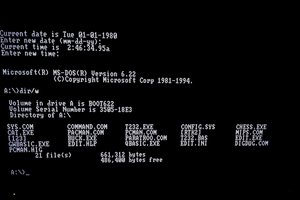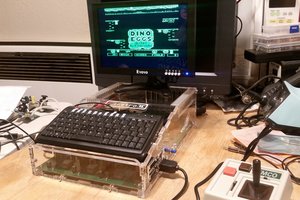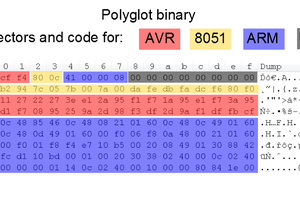I was wondering what the IBM Personal Computer would have been like if they had chosen the Motorola 68000 instead of the Intel 8088, so I used my MCL86+ to emulate the 68000 and find out!
The MCL86+ is a board which uses a Teensy 4.1 to emulate a microprocessor in C code as well as use its GPIOs to emulate the local bus of the Intel 8088. It can be used as a drop-in replacement for the Intel 8088 and can be cycle accurate as well as run in accelerated modes.
For this project I swapped the 8088 emulation code with my MCL68 code which emulates the Motorola 68000. The 8088 local bus emulation was kept so that all of the 68000’s memory reads and writes could pass through to the IBM motherboard.
Emulating the 68000 is fine, but not very useful without an operating system or some other application to run on it. I chose to use Gordon Brandley’s 68K BASIC which was published in Dr. Dobbs Journal back in 1985.
I should note that just the 68000 emulation is running inside of the MCL86+. All of the IBM motherboard peripherals, video, and memory are used for this project. Video is drawn to the IBM MDA card’s video memory over the ISA bus. BASIC is run out of 64 KB of the motherboard DRAM which is refreshed by the 8327 DMA controller by an interval set by the 8253. The keyboard receives the serial data and generates an interrupt through the 8259 and is cleared by accesses to the 8255. Basically all of the major components and glue logic of the IBM motherboard are used!
I ran a few tests and it seems that there is not much of a performance difference between running an 8088 and a 68000 on the IBM motherboard which uses 8-bit chips exclusively. If IBM had chosen the 68000 they may actually have used the 68008 which is a 68000 with an 8-bit local bus interface. Perhaps this chip was not available at the time IBM’s project, code-named ‘Chess’, was in development. It could also have been the case that Microsoft did not have an operating system or BASIC ported to the Motorola 68000 architecture. What this project shows is that the performance difference was not so profound that it would have made a difference in IBM’s selection process.
Here are some videos of the machine in action:
I hope this project helped satisfy those who have wondered what the IBM Personal Computer would have been like if they had selected the Motorola 68000 instead of the Intel 8088!
 Ted Fried
Ted Fried


 Louis Paul
Louis Paul

 Jon Thomasson
Jon Thomasson
 Martin Hub
Martin Hub
No, the 68008 was not even in sampling in time for the team that built the 5051. (The 68000 was in use by the team that built the Scientific 9000, but that was a project of different scale. Interesting that IBM later re-used the 9000 model number.)
Curious as to what you did to get drivers for the peripheral parts. Did you write those yourself? Also, what does the MCL68 do with odd bus error exceptions? Did you disable those when you folded the 68000's 16-bit bus into the 8088's 8-bit bus, or did you just make sure all the driver code used the MOVEP instruction?
My search foo didn't bring up any decent results for Gordon Bradley's 68K BASIC. Is there a technical comparison somewhere between the syntax and internals of that and Microsoft's implementation of their BASIC for the PC?